Yathe Byan Cave

Beez Neez now Chy Whella
Big Bear and Pepe Millard
Mon 11 Dec 2017 23:07
|
Yathe Byan
Cave
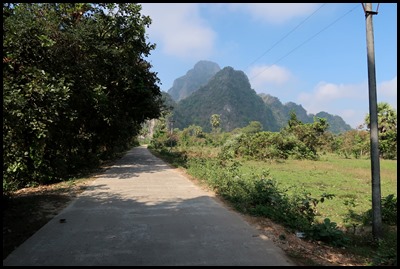 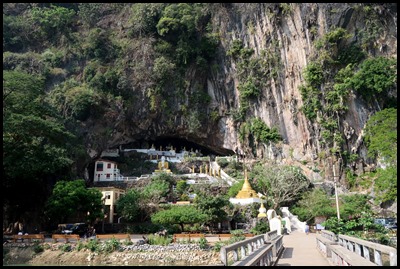 We took a side
road and at the end saw quite a sight, a holy place half in and half out
of a cave.
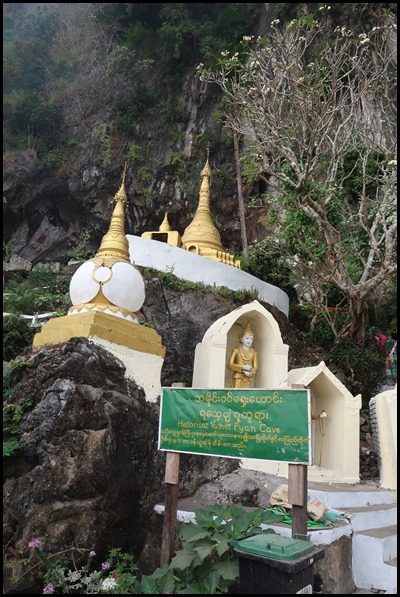 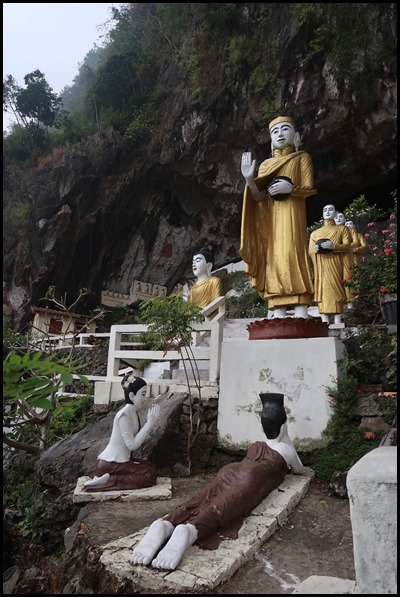 We climbed the steep steps passing a few faithful and read the information board:
The Ya-The-Byan Cave is one of the natural limestone caves which is situated on
the western side of Than Lwin River at 116 feet above sea-level, near the
Ya-The-Byan village, Hpa An Township, Kayin State.
On the eastern walls and the
interior of the Ya-The-Byan Cave, votive tablets and many Buddha images of
different sizes from 3 inches to 5 feet in height can be seen.
As there is no direct sunlight,
the original workmanship of Buddha images is well preserved and can be viewed
today. Studies show that statues, images and votive tablets were donated in the
17th Century by many pilgrims and devotees who wanted to make merit from nearby
region. There are three Buddha images in sitting and standing positions which
are nearly 5 feet in the height and carved on the walls. A significant motif of
these Buddha images is the rising of flames from the hair-knot. Some of the
Buddha images can be dated to the top A.D 13th Century. Some of the votive
tablets have been lost due to natural disasters and long
duration.
The Department of Archaeology,
National Library and Museum of Ministry of Culture has preserved and maintained
the Ya-The-Byan Cave since 1975.
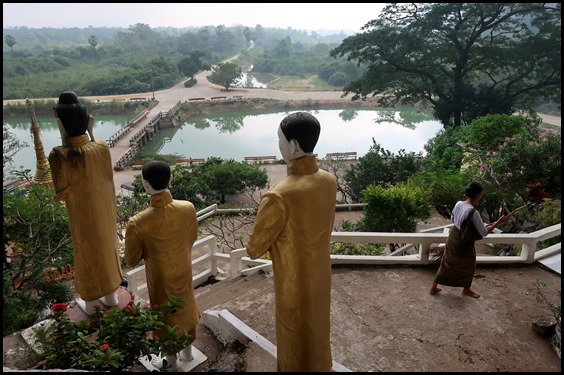 View from the top of the
steps.
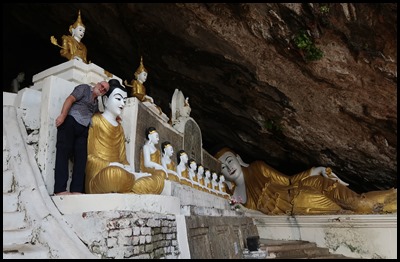 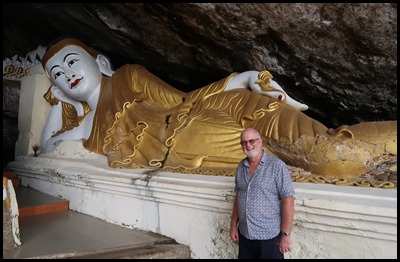 Bear’s new
friends, sadly, a bit crumbly.
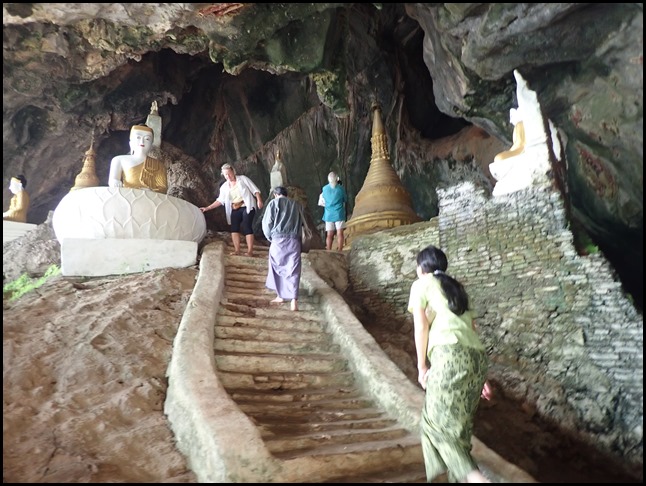 Above us, the
higher cave.
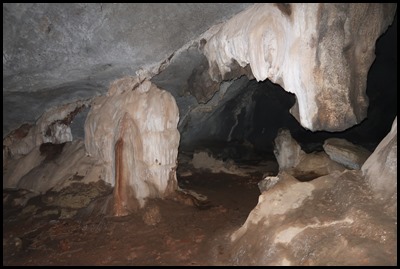 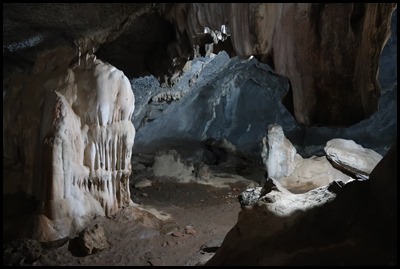 We went to explore the cave and saw
some nice Saracens heads.
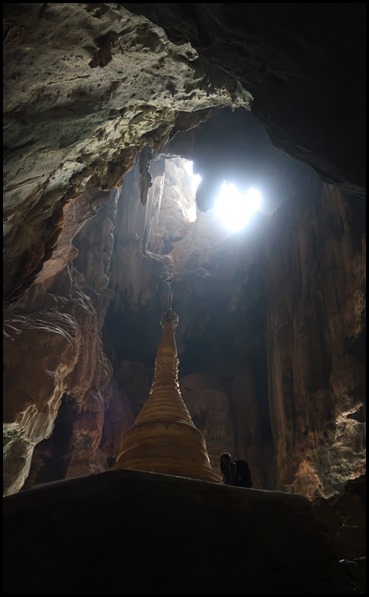 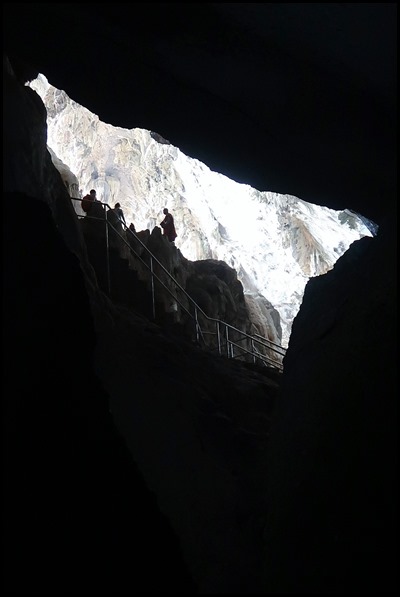 High above us a golden stupa and steps up to the
outside.
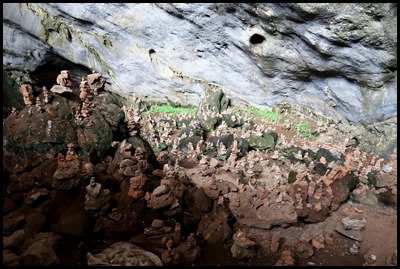 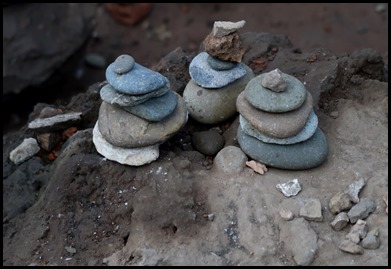 To our
right was a ‘field’ of stone mounds.
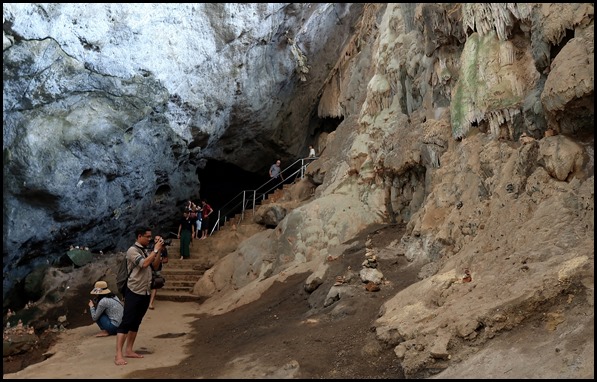 The end of the field of stones, looking up at Bear on the
stairs up to the viewing platform.
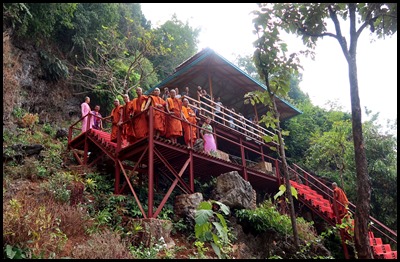 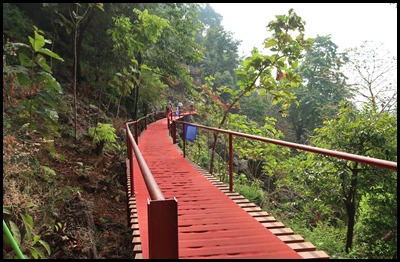 Up the steps we looked up to a viewing platform, reached by a bridge, with quite painful floor matting.
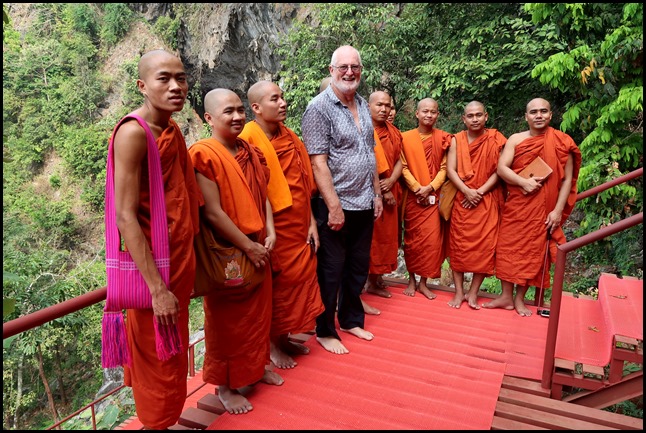 Once there, Bear
posed with new friends.
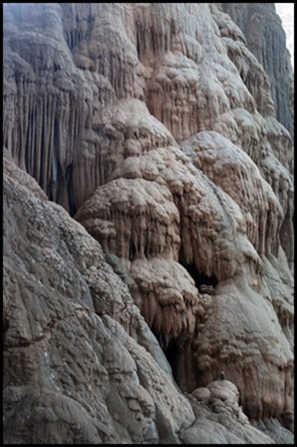 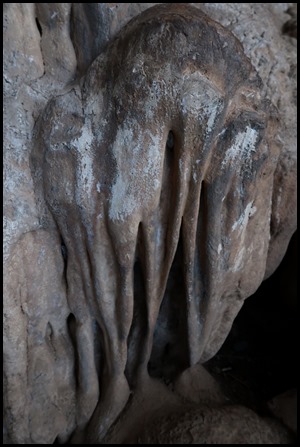 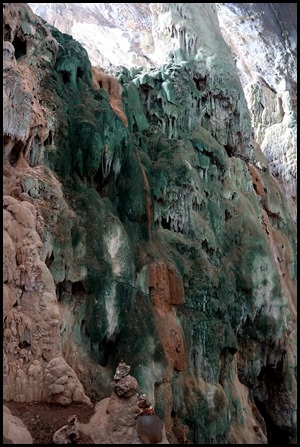 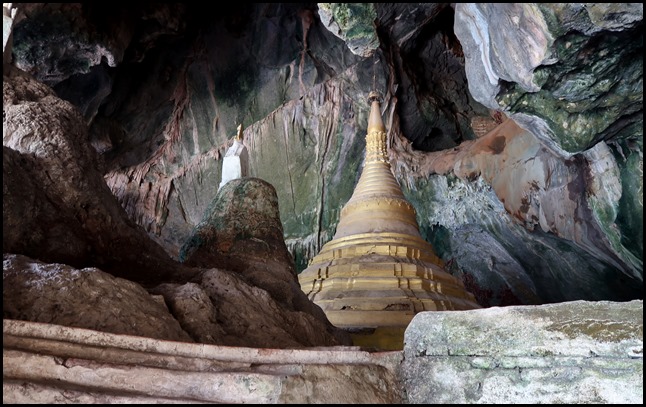 Back in the cave we took in more of
Nature’s sculptures.
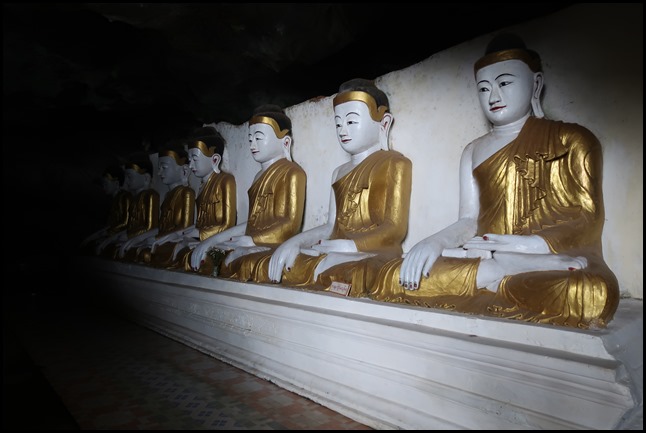 Back in the first part of the cave
with quite a line-up.
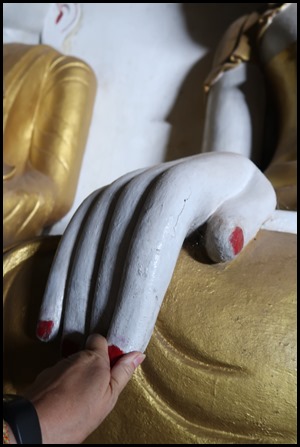 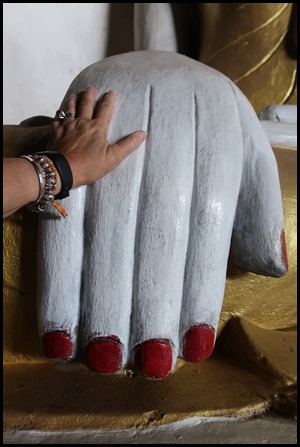 Holding
hands gives an idea of how big the Buddha’s are.
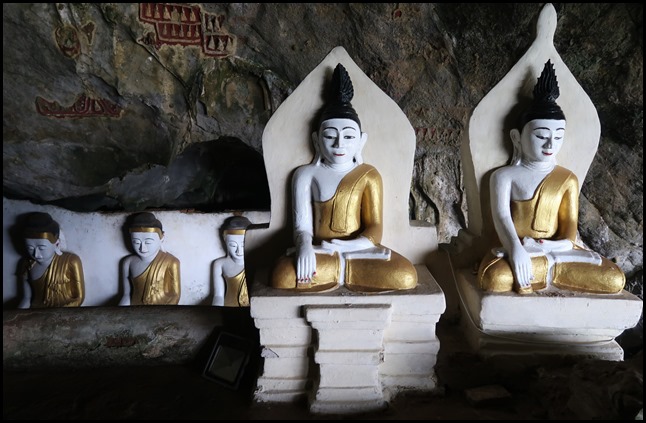 Up the steps to the top of the cave
and loads Buddhas carved or added to the
wall.
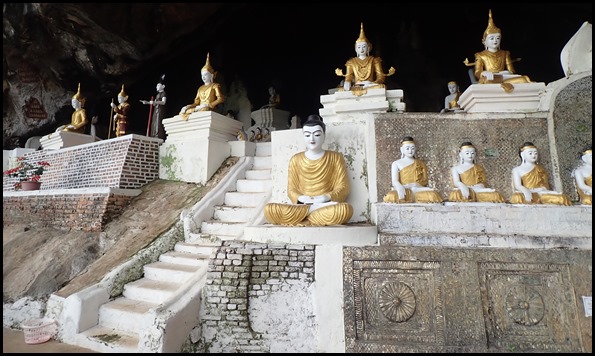 Down the front steps of the upper cave.
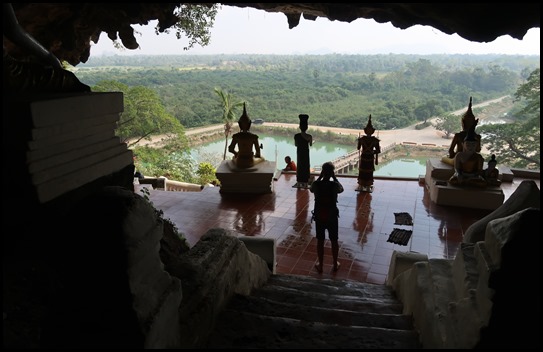 View out from the
top.
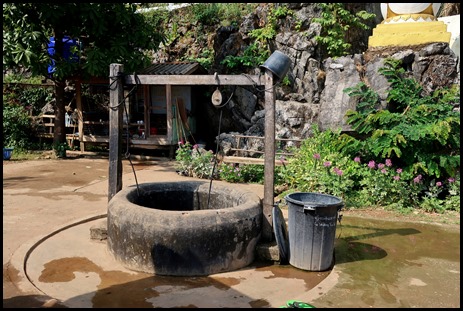 Outside, a well
with a bucket for feet washing and an information board about the
bats.
The caves around Hpa An are home
to millions of bats from over 10 different species. The keystone species within
the caves are bats. The copious guano they deposit beneath their roosts has
enabled a whole ecosystem of unique flora and fauna to develop. These bats not
only create ecosystems but provide important ecosystem services for human
communities: by eating huge numbers of agricultural pests, and by providing
guano that is harvested regularly by local communities, they are a valuable
asset.
Based on scientific surveys, at
least 7 species of invertebrates can be found in Yathet Pyan cave. The smallest
rare species of bat and the world’s smallest mammal Kitti’s hog-nosed bat also
known as bumblebee bat Craseonycteristhonglongyai are living in this
cave. Among the 7 species of bat, Minopterusmagnater, numbers around
50,000, as the large number of bat is found in this cave.
The cave ecosystems created by
the bats are fragile; too much disturbance and they begin to unravel. In
developing the sites we need to achieve a delicate balance, allowing the caves
to be visited by pilgrims and tourists, but in a way that allows the wild
creatures to share them, too.
ALL IN ALL QUITE A HAPPY
FEELING CAVE
DOESN’T LOOK AS OLD AS IT
IS
|